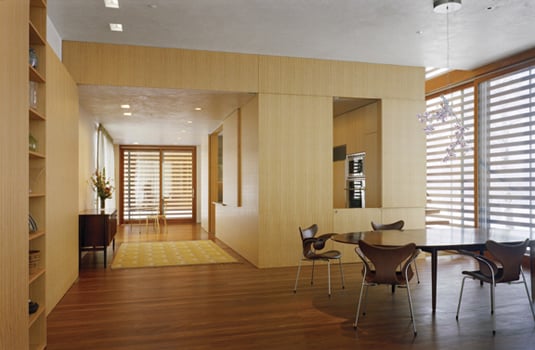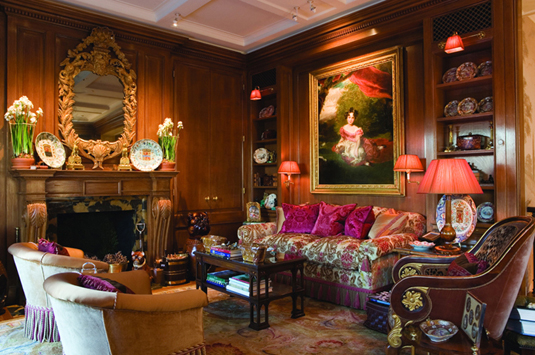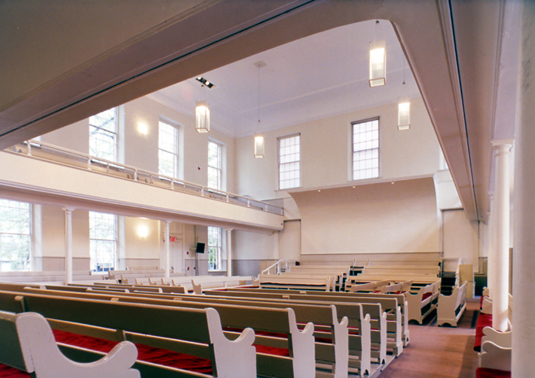
January 15, 2013
When It Comes to Lighting, It’s About Feeling Not Seeing
How lighting can be used to establish a sense of wellbeing and a desired emotional tone
I often find myself in scenarios that go something like this: After walking through a space, the client describes the architectural elements and tells me what’s important to see, as well as how the space will be used. “Yes,” I respond, “you can light it to perform any of the tasks you want to perform, and I can make it look the way you want it to look. But how do you want it to feel?” In my view, that’s a critical question when it comes to lighting up a room.
Case in point: During a recent charrette to redesign a multipurpose art center, the architects were keen to have the lighting signal that each room, from gallery to classroom, has a unique function. They offered up inventive ideas on ways to design the architectural details and lighting fixtures to do just that.
But my job is to shape the light itself. I want people to feel different in each room where they’ll be performing different kinds of tasks. This affect is not as simple as emphasizing what you see directly in front of you. It can come from the periphery of your vision—the “fringe of your focus”—and it determines how you feel in a particular space. You absorb much of the affect without being acutely aware that you’re doing it through what we variously call the co-conscious, unconscious, or just the “noise around us.” Some of this is sensed through the body—it’s everything we see out of the corners of our eyes.
Once I meet the clients’ goals of function and look, I work at the peripheral layer to establish both a sense of wellbeing and a desired emotional tone. What, then, does it mean to talk about how a space feels? People usually respond in one of two ways. For residential clients, the question of “how the lighting should feel” may ignite strong emotional responses, such as, “I hate fluorescent lights. I hate track. I love incandescent. I love candle light.” “My mother (or father) always went around turning off lights, and I can’t bear the feeling of not seeing.” “I hate it when it’s too bright; I feel ill.” “I’m afraid of the dark.” “My partner and I totally disagree about the reading light in the bedroom and how bright the bathroom should be. We always fight about it.”
These intense emotional reactions—fear, hate, love, and anger are hard-wired biological functions of our nervous system—make sense to me. We grew up, as did our parents, in a world of plentiful artificial light. It is inextricably fused with our memories of home, whether gloomy or bright, candlelit or washed by a single circular fluorescent in the center of the kitchen. We remember the (now unimaginably) high levels of illumination above our desks in elementary school, and the acutely bright light at the hospital where we were rushed with broken bones, or visited relatives.
Despite these common memories, when I ask, “How do you want the lighting to feel?” I’m met with blank stares. With our focus on function and look, describing “feeling”—some neuropsychologists distinguish feeling from emotion by its subtlety, complexity, and the way it mixes intelligence, judgment, and experience—is particularly difficult. To break through this barrier, I might ask, “Do you want it to feel comforting, calm and orderly; cozy and intimate, enchanting or glamorous, mysterious, friendly, playful, surprising?”
Some of our feelings are unique to us, some we share with others. For homeowners whose spaces are deeply personal, I help identify the distinct feeling they want to have in each room. For public spaces with their diversity of users, I work from a more generalized idea of what the feeling should be, based on the desired activities and psychological states. Here’s where the peripheral layer comes in. Once we establish the emotional tone for the environment, I think about shape, movement, and light-to-shadow relationships and wavelengths. This is what the eye and brain register outside the narrow cone of focus that takes in detail and exact color.

Dining room, Colorado, by Maya Lin.
Courtesy Paul Warchol
With gently glowing walls and no distracting luminous focal elements, this dining room is serene and composed, giving its occupants a feeling that’s simultaneously sheltered and expansive.

Living room, Park Avenue penthouse. Architect: Laura Schwartz.
Courtesy Coke O’Neal
Incandescent lamps give a warm, intimate, cozy feeling to this living room, while perimeter lighting adds a sense of drama and excitement at the edges.

Mirror Chandelier by Studio Roso, over lobby of Ames Hotel, Boston, by Morgans Hotel Group and Rockwell Group.
Courtesy Morgans Hotel Group
The shimmering chandelier bounces light off the ceiling, walls, and floor in constantly changing patterns, stimulating feelings of fascination, enchantment, and playfulness.

Sanctuary, Friends Meeting House, New York City.
Courtesy Elliott Kaufman
The democratic and humble lighting in this Quaker meetinghouse supports quietude, peace, and contemplation. What is tangential is what is most powerful, as we like to say. So consider the light you don’t see—that which hovers at the edges of your consciousness—if you’re curious about what might be impacting your experience of a space.
Linnaea Tillett, Ph.D., IESNA, is an environmental psychologist and lighting designer. She is principal of Tillett Lighting, lighting consultants for waterfront landscapes, infrastructure, parks, public art and private interiors. tillettlighting.com. All lighting in interiors shown by Tillett Lighting Design.





